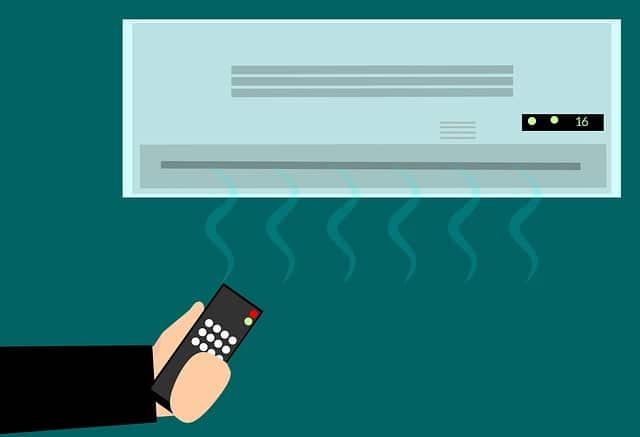Article spotlight:
- The benefits of installing roof insulation include cutting energy bill costs, reducing your ecological footprint and having more stable temperatures indoors.
- The type of roof insulation you need will depend on your house design.
- Some roof insulation jobs can be done yourself, but most will require a professional.
Firstly, what is roof insulation? Installing insulation acts as a barrier to heat, either keeping it in or out of the home. The type of insulation you need will depend on where you live and your house design—but don’t worry, we give you some tips on selecting an insulation type below.
Does roof insulation really make a difference? In short, yes. But how? Insulation stabilises your home’s temperature, reducing the need for artificial heating and cooling (fans, air conditioners, heaters, etc.). This will reduce your energy consumption, lowering your power bills and reducing your greenhouse gas emissions.
Alright, now onto what type of insulation to use, how much it’s going to cost you and a few common mistakes to avoid in the installation process.

What is the best roof insulation type in 2019?
Insulation Products
Blanket/Batt & Roll Insulation
This type of insultation can be fitted between the studs, joists and beams of unfinished walls, as well floors and ceilings. It’s a good option if you have a flat ceiling and a sloping tile or metal roof.
Board Insulation
If your home has very little space between the ceiling and roof, board insulation is a good solution. DIYers tend to lean towards board insulation as it’s easy to use and can be bought in a range of thicknesses.
Loose-fill Insulation
Most searches for loose-fill insulation will return results for asbestos risks. However, what we’re talking about is blow-in insulation. Some installers even provide acoustic insulation as well as the climate-control type. Blow-in roof insulation tends to be faster to install and is known for being a favourite amongst those looking for a green product.
Foam
Foam insulation is resistant to water, mould and insects and can expand into even the hardest-to-reach spaces. However, it does tend to be more expensive.
Reflective Foil Insulation
Reflective foil is a preferred method of keeping radiated heat out of the home in hot climates (which is pretty much everywhere in Australia, right?). It’s mostly used in roofs and walls and is combined with batt insulation.
Insulation Materials
Polyester
If you’re asthmatic, you’ll probably want to lean towards polyester roof insulation as it does not have any breathable fibres. It is also quick drying if affected by water and does not crumble over time.
Natural Wool
Wool roof insulation is one of the more expensive materials, however, it’s one of the oldest methods of insulation. It’s also considered a good sound insulator, depending on the thickness of the insulation.
Glass Wool
Glass wool insulation tends to be odourless, fire resistant and provide efficient thermal and acoustic results. You can also find some glass wool insulation that is made from recycled glass bottles, for that extra environmentally friendly touch.

Rockwool
For those of us living in CBD areas, rockwool may be a good option due to its good sound reduction properties. Rockwool is also a breathable material, which can help remove any dampness.
Cellulose Fibre
Cellulose Fibre is a recycled material that leaves no gaps in the ceiling’s insulation, meaning better results. Other benefits include having food noise reduction properties and does not blow around a roof cavity once installed.
Extruded or Expandable Polystyrene
Also known as XPS, this type of roof insulation is known to be long-lasting and isn’t easily damaged by water. The material is cut to the measurements required and is forced to the desired shape with controlled heat and pressure, so it can go almost anywhere.
Note: Whatever type of roof insulation you install in your home, you’ll need to look at having it topped up every 15 years to seal up naturally occurring gaps.
How much does roof insulation cost in Australia?
- Are you having a professional install your roof insulation?
- Are you doing a DIY job and buying your own insultation materials?
- What type of roofing insulation are you using?
- How big is the space you’re insulating?
These are just some of the questions that will alter the cost of your roof insulation job. While you may be tempted to cut costs by not hiring a professional, remember, they’ll most likely have wholesale price, saving you in this way. Plus, they’ll know exactly how to get the best results.
“But how much will roof insulation cost me?” To do your own roof insulation, you’re looking at around $37.00 to $472 per batt, roll or sheet, depending on the material, plus your labour time and tools required for the job.
According to EnviroShop, you’re looking at around $8 to $16 per square metre for materials plus a further $8 to $10 per square metre for installation and $8 to $12 per square metre for clean-up for a professional job.
Can you over-insulate roof rafters?
Whatever type of insulation you install, you’ll want to ensure your home has adequate ventilation. If you plan on installing your own roof insulation, you’ll also need to know the Building Code of Australia for installing and topping it up. The Australian Government Your Home website has more information on this.
How do you install roof insulation?
Again, how you install roof insulation will depend on the material and type you buy. There are some types you’ll need specialised equipment for installing and you’ll need safety wear for majority of insulation materials. Here are a few tips for installing any type of insulation:
- Ensure your power is turned off.
- Install insulation in the morning when it’s not as hot in your roof cavity.
- Protect your eyes, mouth, nose and as much skin as possible.
- Measure twice, cut once.
- Keep your off-cuts to fill in small gaps.
- The easiest way is to hire professional insulation contractors near you.






